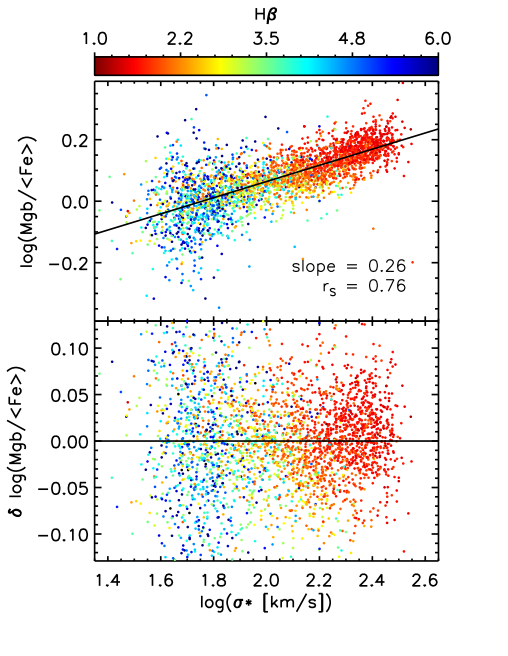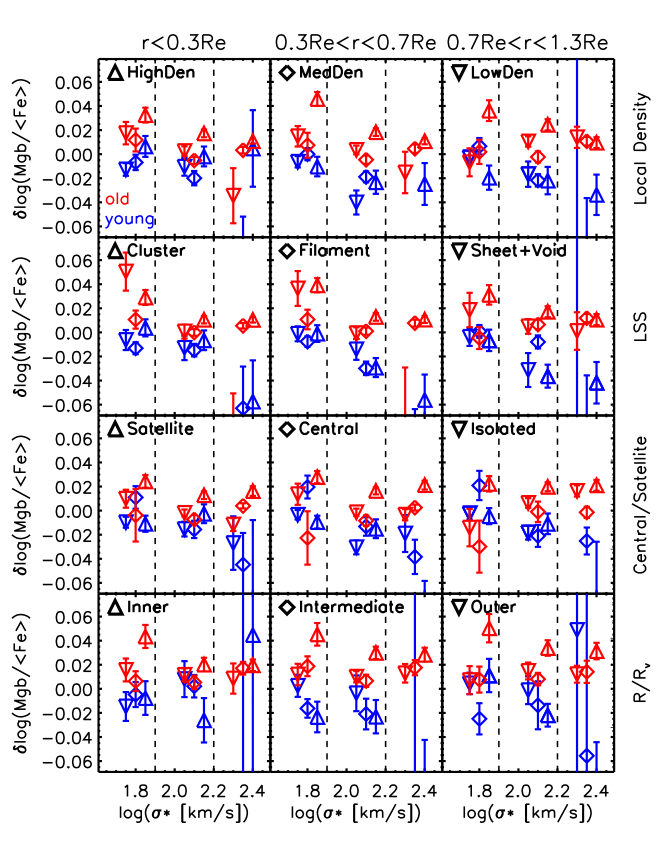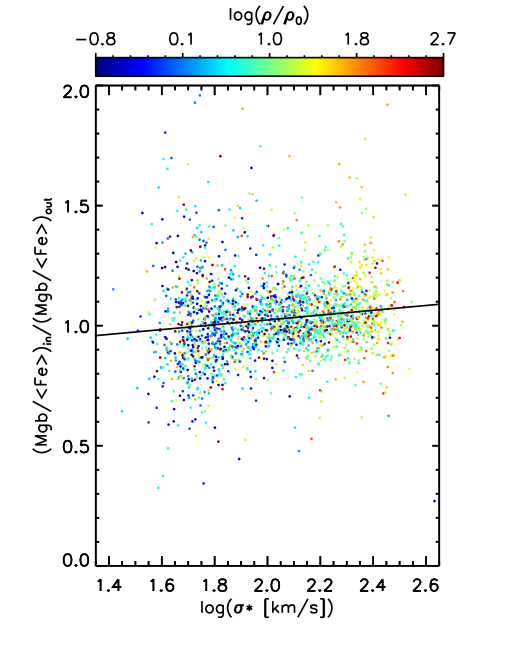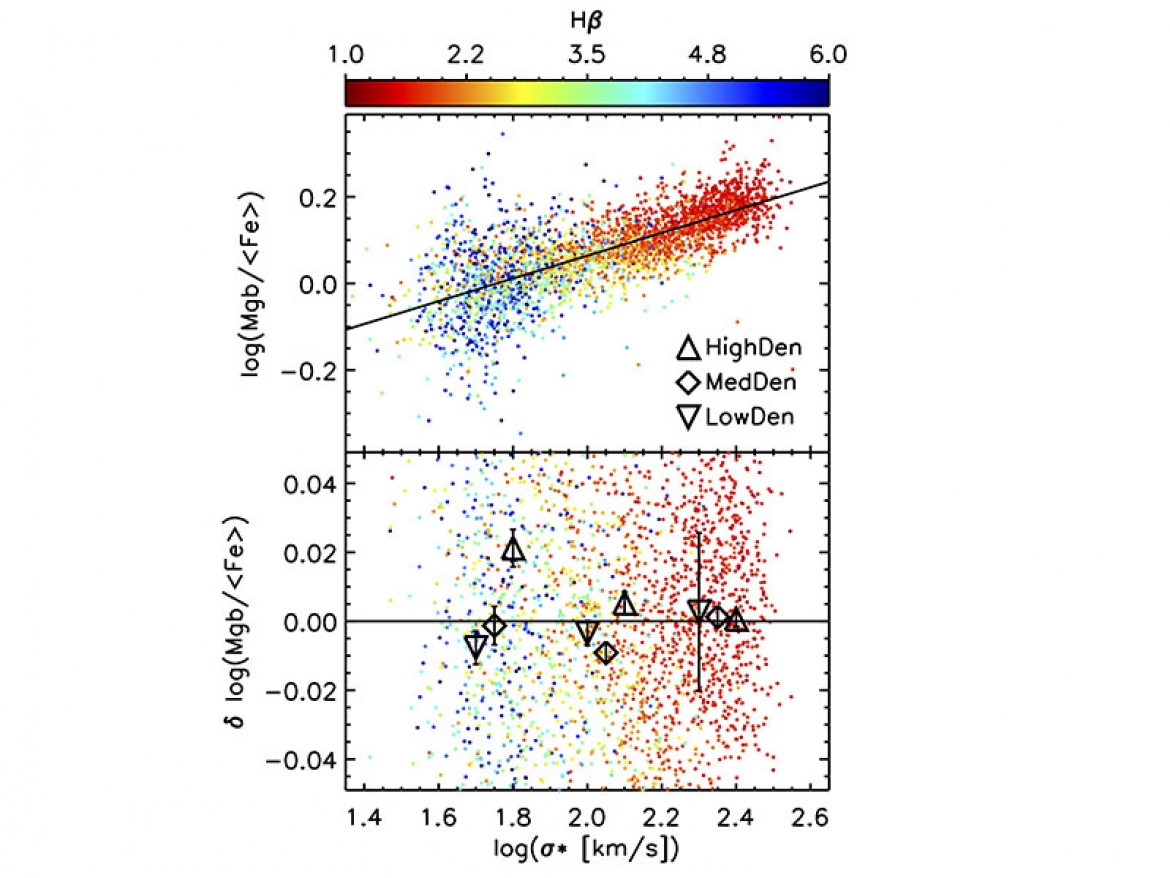Environmental dependence of alpha abundance for nearby galaxies
by Zheng Zheng, Cheng Li, Shude Mao
The alpha-to-iron ratio ([alpha/Fe]) is an important indicator for star formation histories because alpha-elements (such as O, Ne, Mg, Si, Ca, Ti) are mostly produced in core-collapse supernovae, whose progenitors are high-mass stars, while irons (Fe) are mostly produced by Type Ia supernovae, whose progenitors are low-mass compact stars. High-mass stars generally have a very short lifetime (~ 1 Million year), whilst low-mass compact stars almost all have ages larger than 1 Giga year. So a galaxy formed in a single burst or experienced fast quenching will be enhanced in [alpha/Fe] in comparison with a galaxy formed with an extended star formation history.
Environmental effects, such as harassment, strangulation, or gas stripping, have been recognized to play important roles in shutting down star formation in galaxies. Previous studies have shown that the [alpha/Fe] and the spectral index ratio Mgb/
A collaboration group led by Dr. Zheng Zheng at the National Astronomical Observatories, Chinese Academy of Sciences and Profs. Cheng Li, Shude Mao at Tsinghua Center for Astrophysics recently studied the environmental dependence of Mgb/
They found that (1) all galaxies show a tight correlation between Mgb/
Relevant publication:
Zheng Zheng, Cheng Li, Shude Mao et al., 2019, ApJ, 873, 63








